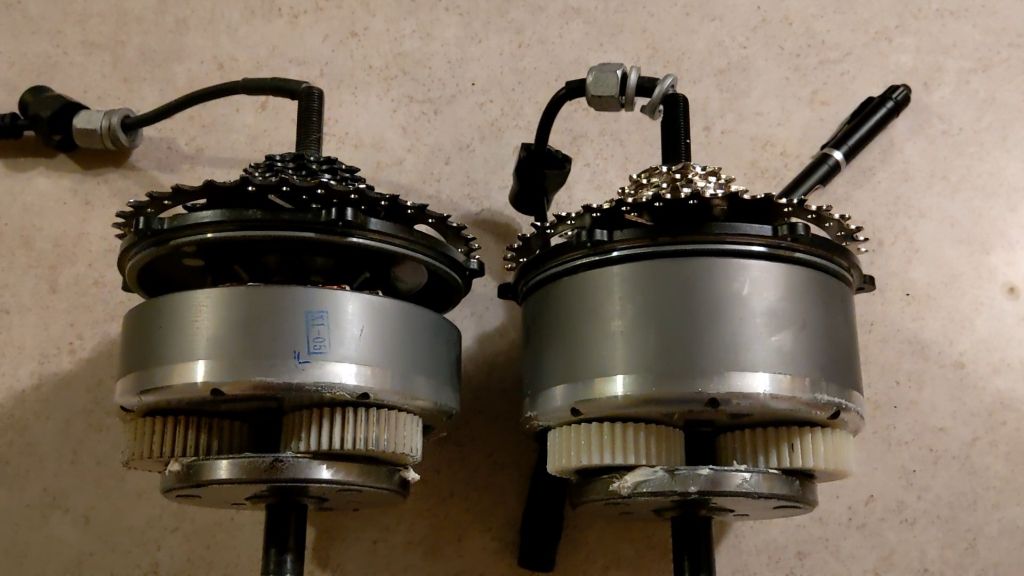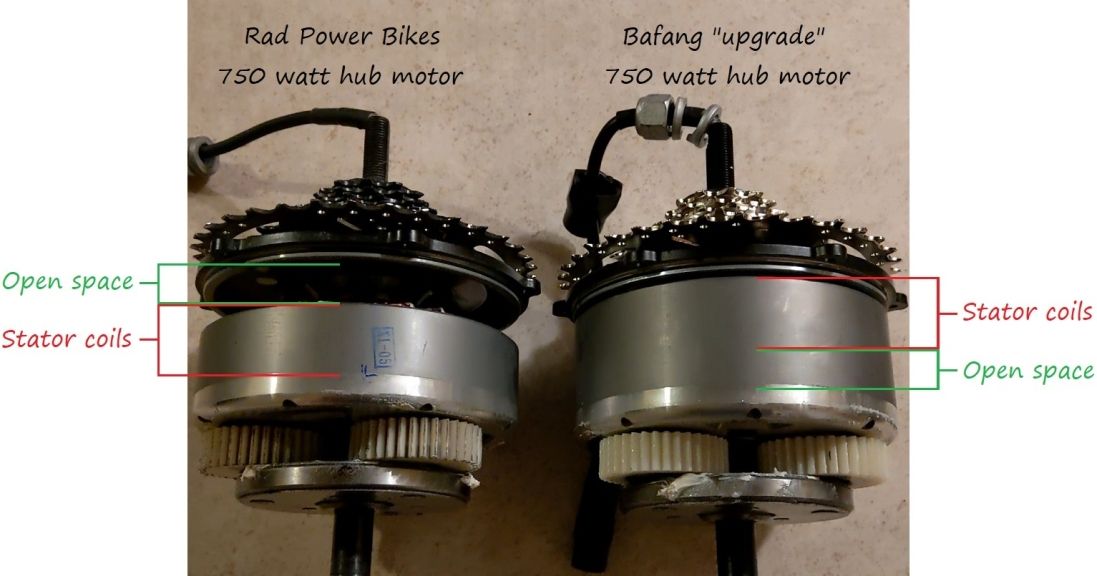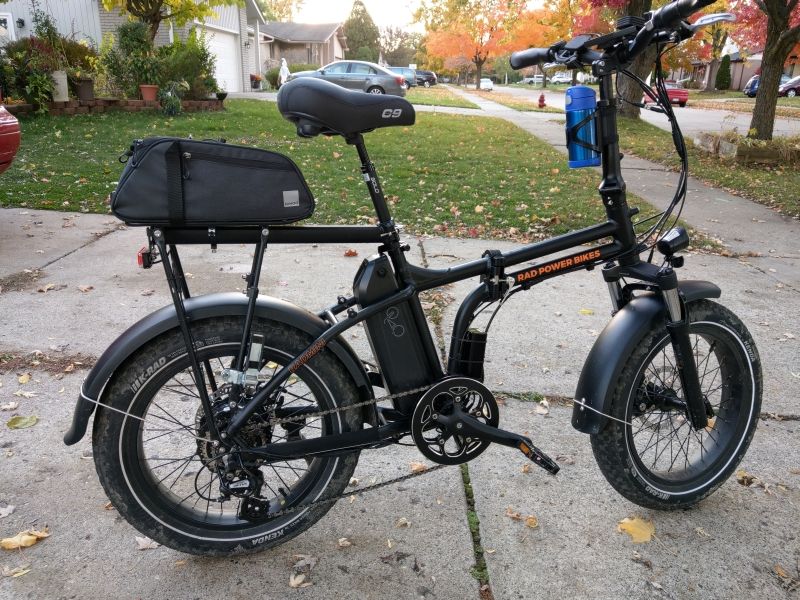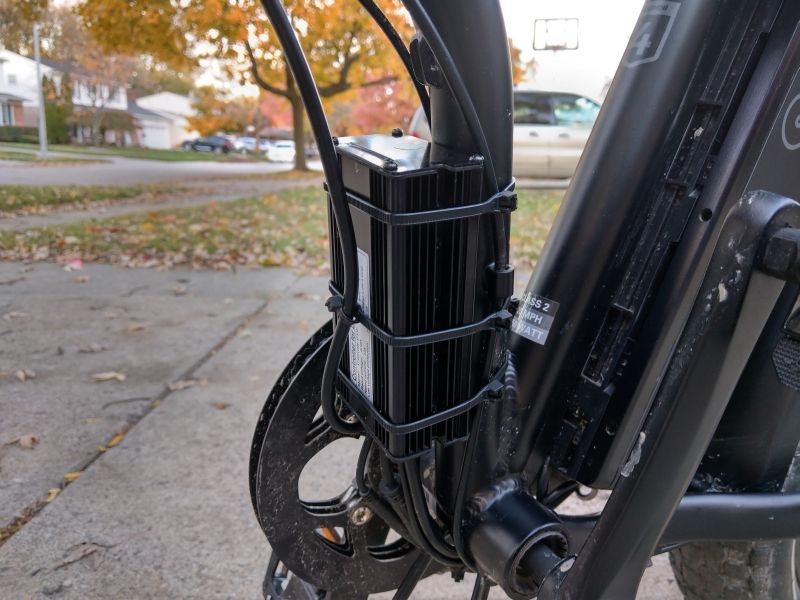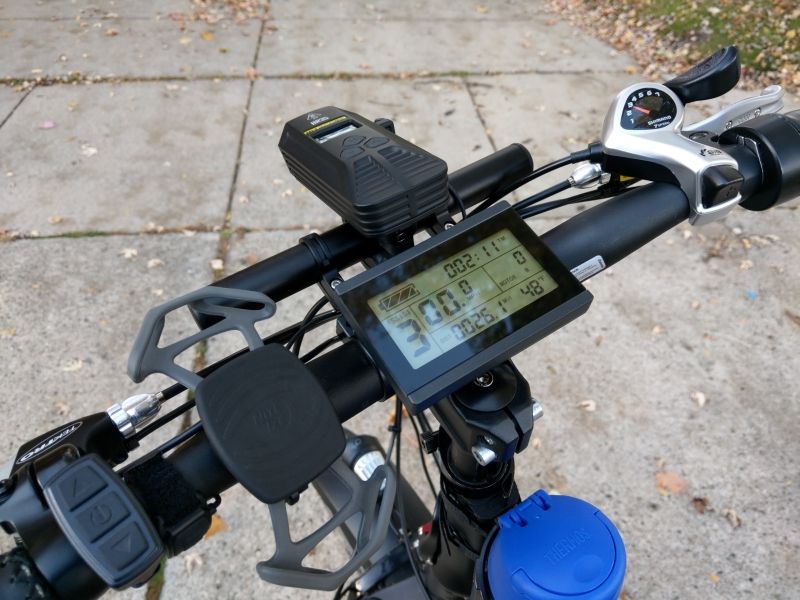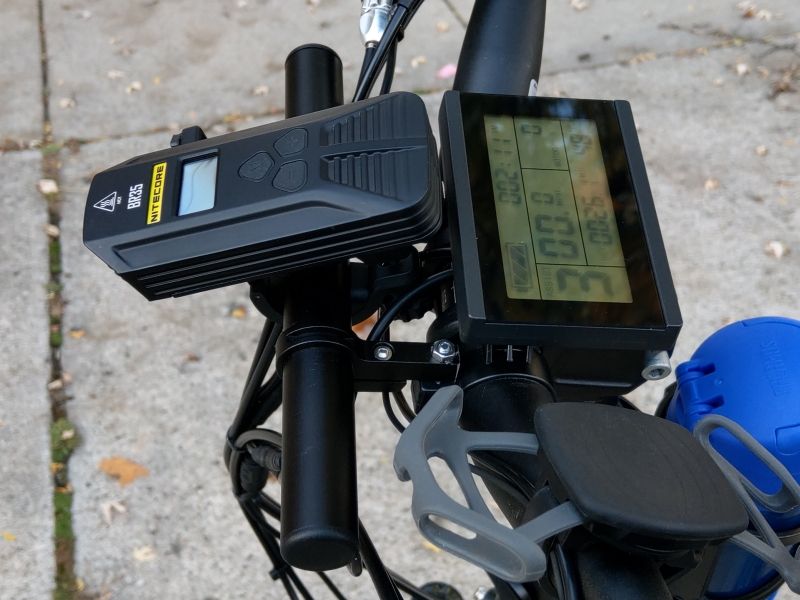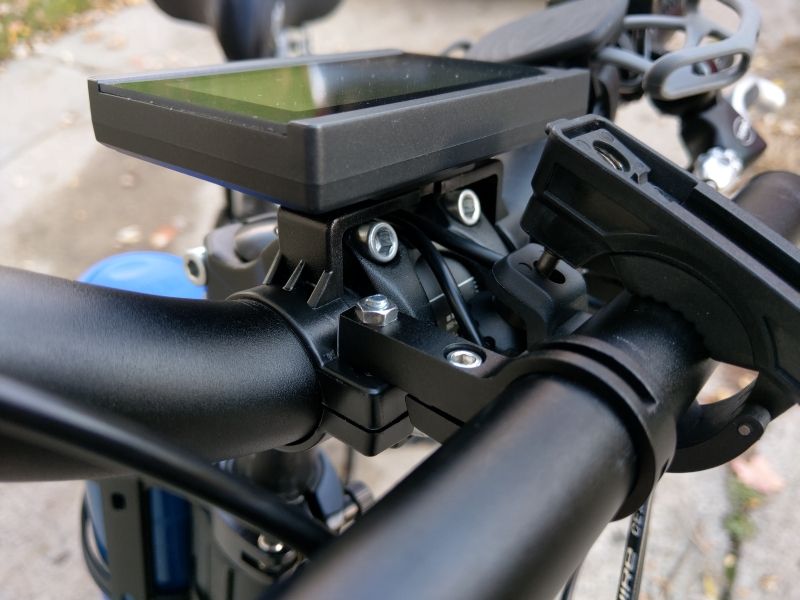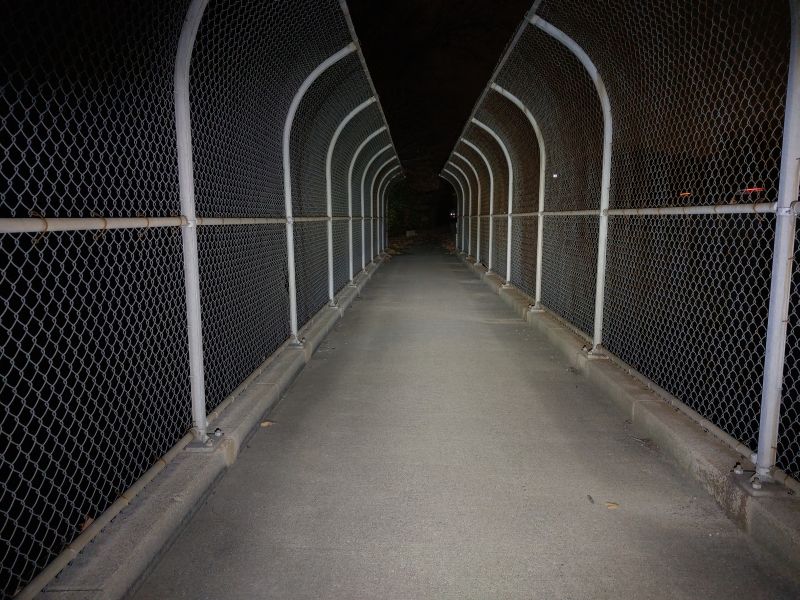Since I no longer had a power connection inside my rack bag, I decided to add some accessory connections to the front housing of my new rack battery.
I was unable to find panel mount XT-90 connectors, so I went with XT-60 instead. There was room for 3 of them inside the battery housing, and most of the time was spent cutting the oddly shaped holes. I do have a "nibbler" for metal and plastic, but the material was too thick, so I had to use a drill and a melting tip on my soldering iron. It was messy. The ports are connected in parallel to the Anderson connector that came with the battery, but are after the key switch. This means that the battery can be turned off and no power goes to the accessory ports from that battery. However, if the front battery is turned on and connected, then that will power the accessories. The connections basically become a parallel bus, and power can be turned on or off from either source or both, and you can cut power to the accessories completely if needed.
The panel mount XT-60 uses a 2.5mm screw, and the 8mm length I found worked out perfectly. The XT-60 female side had no snap-in cable cover like the bigger versions, so I used heat shrink tubing. I'll a larger tubing to cover the connector later today. I'm considering soldering the cables at a 90 degree angle so they go straight up, but I'm not sure how that would work with heat shrink tubing. Let me know if you guys/gals have any ideas!
I also switched the plug for the 12v converter and the lead for my former rack bag battery. The converter works for up to 60 volts, so that was fine. The former rack bag battery is 48 volts, so I can't run it at the same time as the 52 volt batteries (even though there is some overlap in voltage range). However I can carry it as a spare, and plug it in when the other two batteries are depleted and turned off. Plugged into the accessory port, it is connected to the controller, and will run the bike fine by itself with a quick setting change to the minimum voltage (C12). Questions and comments are welcome 😁

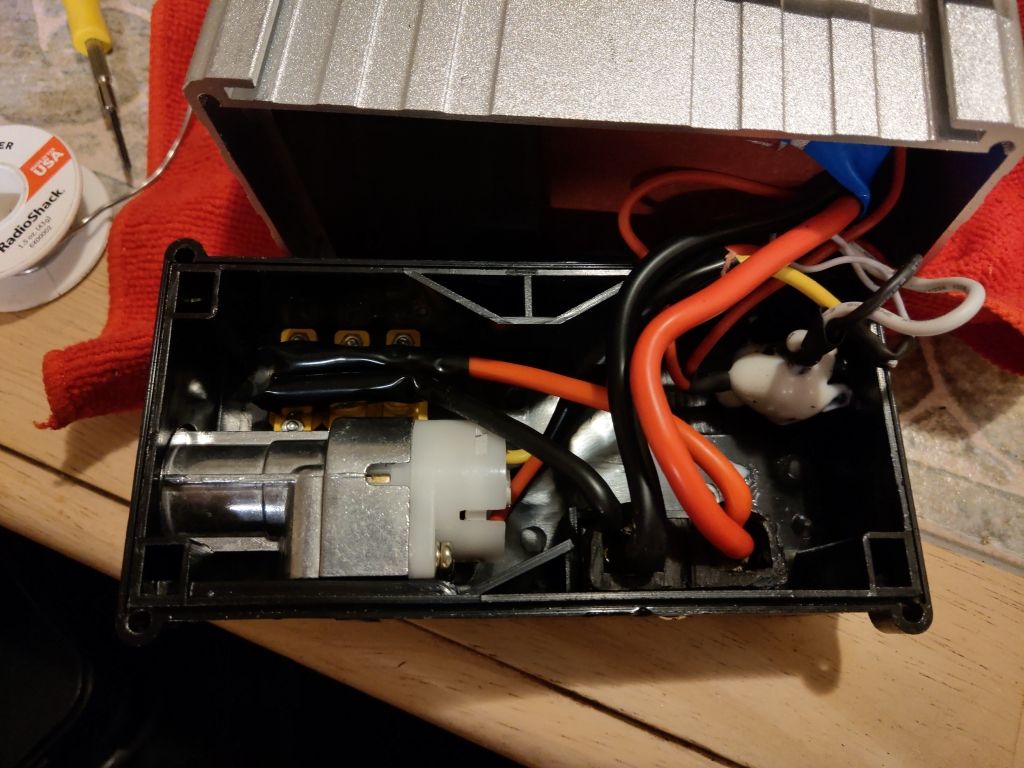
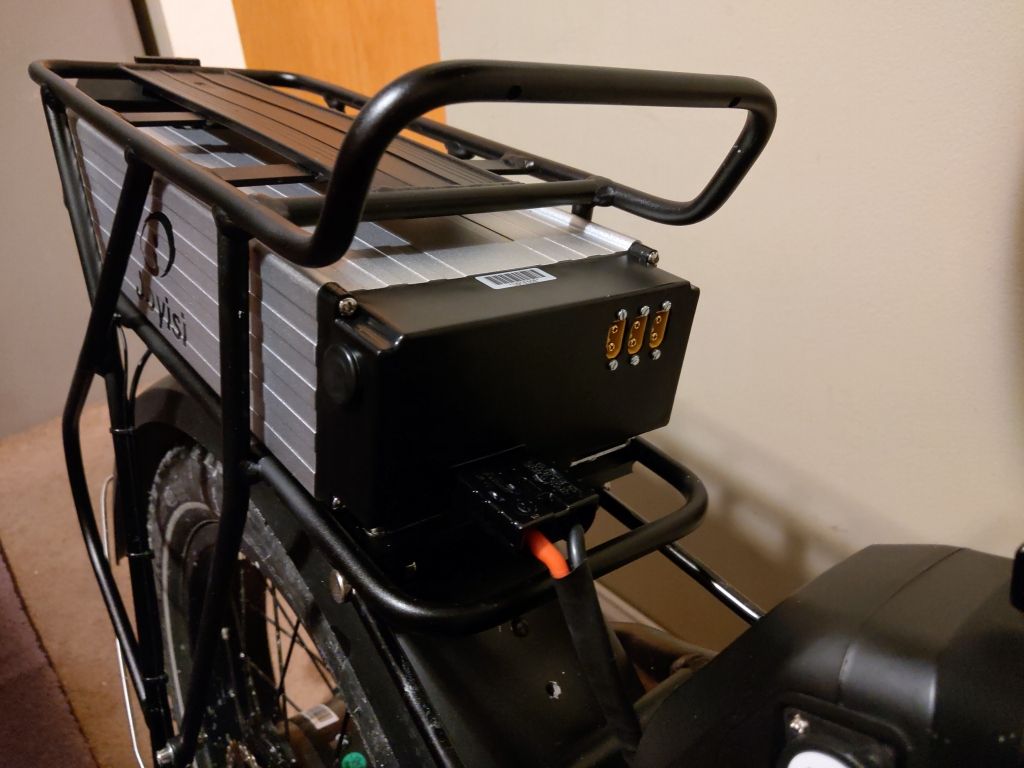
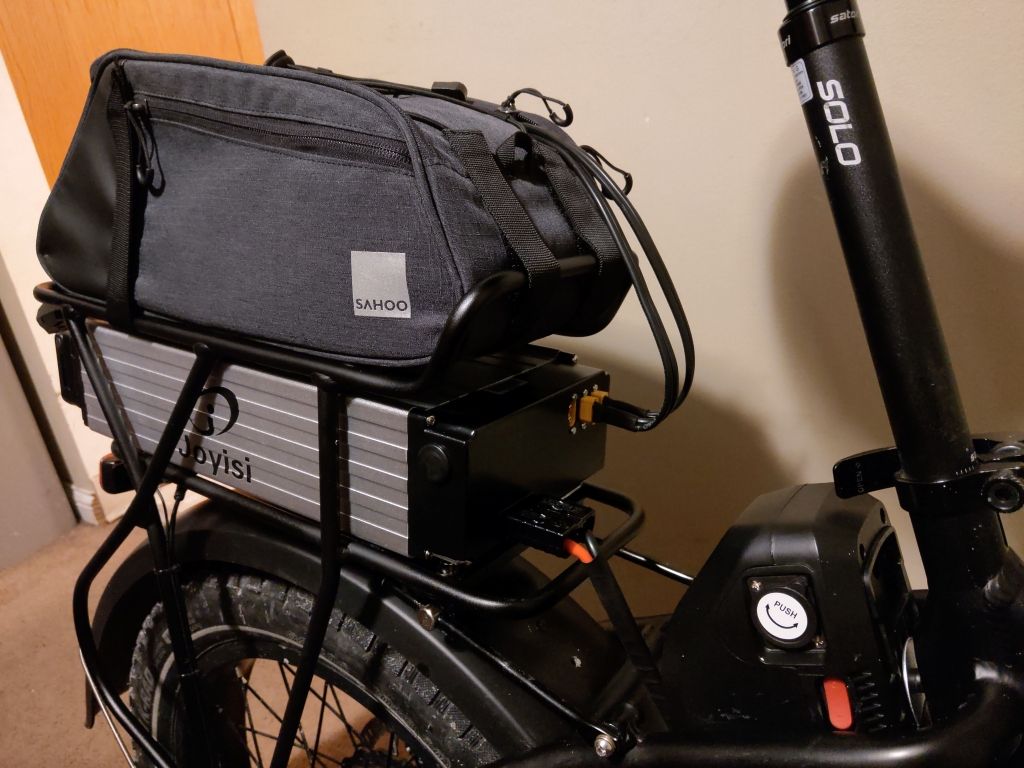
I was unable to find panel mount XT-90 connectors, so I went with XT-60 instead. There was room for 3 of them inside the battery housing, and most of the time was spent cutting the oddly shaped holes. I do have a "nibbler" for metal and plastic, but the material was too thick, so I had to use a drill and a melting tip on my soldering iron. It was messy. The ports are connected in parallel to the Anderson connector that came with the battery, but are after the key switch. This means that the battery can be turned off and no power goes to the accessory ports from that battery. However, if the front battery is turned on and connected, then that will power the accessories. The connections basically become a parallel bus, and power can be turned on or off from either source or both, and you can cut power to the accessories completely if needed.
The panel mount XT-60 uses a 2.5mm screw, and the 8mm length I found worked out perfectly. The XT-60 female side had no snap-in cable cover like the bigger versions, so I used heat shrink tubing. I'll a larger tubing to cover the connector later today. I'm considering soldering the cables at a 90 degree angle so they go straight up, but I'm not sure how that would work with heat shrink tubing. Let me know if you guys/gals have any ideas!
I also switched the plug for the 12v converter and the lead for my former rack bag battery. The converter works for up to 60 volts, so that was fine. The former rack bag battery is 48 volts, so I can't run it at the same time as the 52 volt batteries (even though there is some overlap in voltage range). However I can carry it as a spare, and plug it in when the other two batteries are depleted and turned off. Plugged into the accessory port, it is connected to the controller, and will run the bike fine by itself with a quick setting change to the minimum voltage (C12). Questions and comments are welcome 😁






